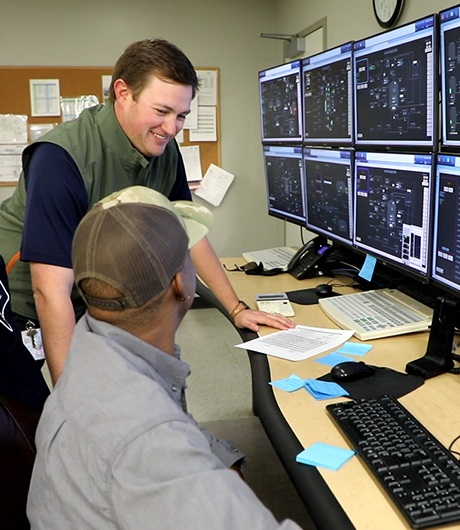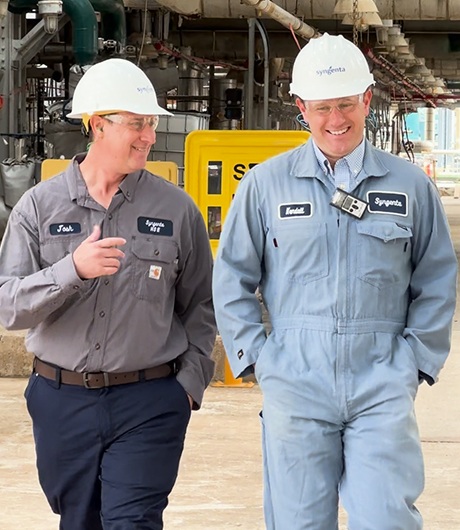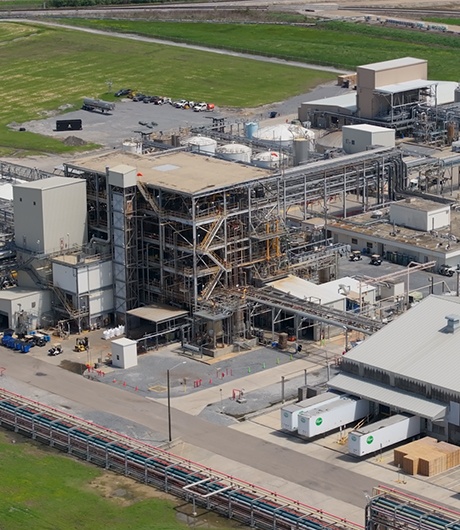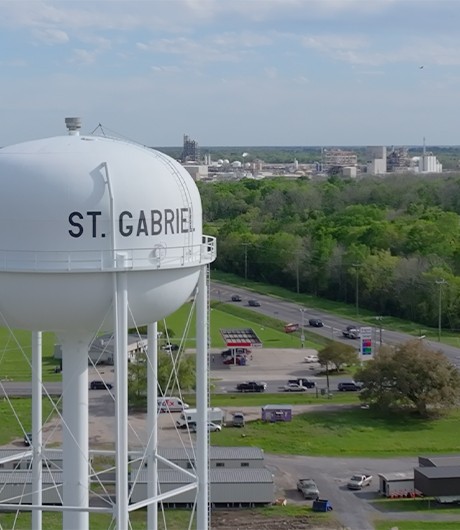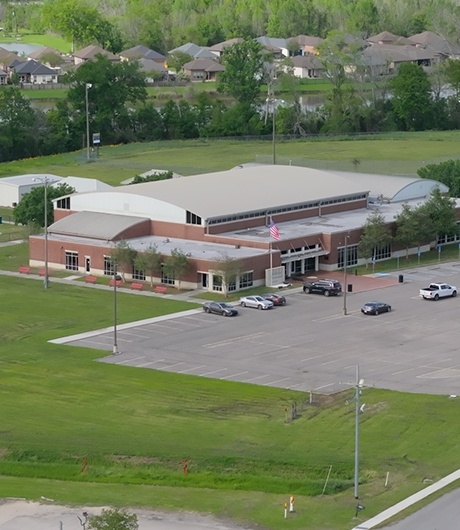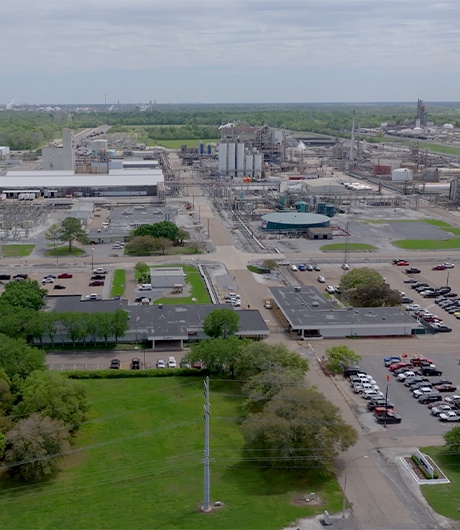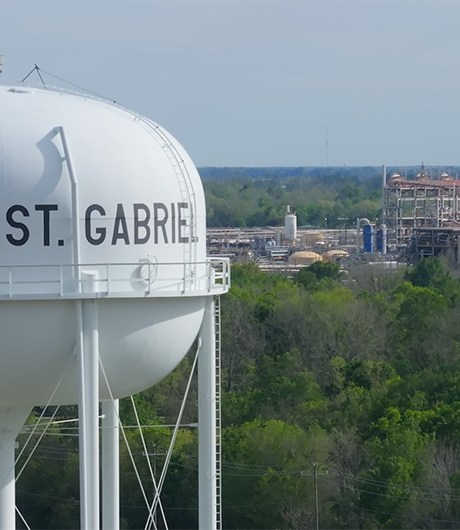St. Gabriel Manufacturing Site Makes a Difference
Leadership and employees at the facility give back in more ways than one.

The folks at the Syngenta manufacturing site in St. Gabriel, Louisiana, have made it standard practice to forge ahead in their endeavor to help farmers feed the world and improve it for future generations. This is accomplished through the theme of giving back and protecting the environment.
Recently, the St. Gabriel manufacturing facility was recognized by the U.S. Environmental Protection Agency (EPA) Green Power Partnership program as a top 100 green power user in the country. The program works with businesses across the country to promote the voluntary use of green power, defined as being generated in the U.S. from renewable resources, which include solar, wind, geothermal, biogas, eligible biomass and eligible low-impact hydroelectric sources. Syngenta is the only organization from the agricultural sector to be named to the Green Power Partnership’s top 100 list, a recognition they are both honored and humbled by.
“Why green power? At Syngenta we’re trying to build sustainability into everything we do,” says Alan McMurry, site sustainability lead at the St. Gabriel facility. “A lot of our sustainability goals revolve around renewable agriculture practices that generally help feed the world in the most sustainable way. One of our priorities is sustainable operations; so, with the products we make at St. Gabriel, we want to walk the talk and have our operations run as efficiently and sustainably as possible.”
Implementing Sustainable Practices
St. Gabriel formulates and packages liquid and powder forms of Syngenta products like Acuron® corn herbicide, Halex® GT herbicide, Gramoxone® SL 2.0 herbicide, Lexar® EZ corn herbicide, and Sequence® herbicide, along with more than a dozen others. To keep up its constant production of so many trusted products, the Syngenta plant employs about 350 full-time employees and another 450 independent contractors.
A lot of our sustainability goals revolve around renewable agriculture practices that generally help feed the world in the most sustainable way. One of our priorities is sustainable operations; so, with the products we make at St. Gabriel, we want to walk the talk and have our operations run as efficiently and sustainably as possible.
With so much production happening in one place and doing so much to make the American farmer more sustainable and efficient than ever, it’s understandable the site would have a rather large carbon footprint. But being okay with that justification and sticking with the status quo isn’t in the DNA here. Syngenta has made enormous strides in decarbonizing its operations, and the St. Gabriel site is the poster child for that effort.
“Syngenta has really made sustainability a core function,” says McMurry. “So, we asked the question, ‘How do you decarbonize your own operation?’ We came up with a number of strategies, but one of the biggest ones is using renewable electricity.”
About 30 percent of the site’s carbon footprint can be attributed to electricity usage — some 151 million kilowatt-hours a year, roughly the equivalent of the power consumption of 14,000 American homes.
Once the commitment was made to pursue green power, the question became, Where do we get this green power? Precious few solar or wind farms exist in eastern Louisiana, so the sustainability team at the site had to do some shopping. Of course, the question of where raised several more questions: What’s the right type of power for our operation? How do we get the power here? How do we best implement it at our site? Should we build our own solar and/or wind farms? Ultimately, Syngenta used a Renewable Energy Certificate (REC) purchasing strategy for solar and wind power, much of it from power producers in Arizona’s high desert country and the plains of West Texas.
And in 2023, the St. Gabriel site happily reported REC purchases for every single one of those 151 million kilowatt-hours from renewable power sources, what the EPA calls ‘green power.’ “Syngenta wants to lead the way with agriculture manufacturing in the U.S.,” says McMurry. “We really dove into that and are proud that we were able to achieve 100 percent of the site’s electricity moving to green power.”
Though electricity is currently the biggest piece of the pie, McMurry and his team are also making strides in decarbonizing the plant’s heat production, using fewer utilities and cutting back on waste.
McMurry is also excited about a more recent development outside the company that should have a major impact on the St. Gabriel plant’s ability to utilize green energy in its operations. In early 2024, the Louisiana Public Service Commission approved construction of two large solar farms in the state. Both are already under construction, and Syngenta intends to utilize green tariffs, which are optional programs offered by utilities to allow commercial and industrial customers to purchase bundled renewable energy, to obtain some of the electricity from those farms once they go online.
“We’re excited to buy local and to support the ones who are ‘growing’ the renewable power,” McMurry says. “Louisiana is starting to build more of that now and there’s room to grow, so we’re trying to support it. We’ve committed to being part of those solar farms.”
Giving Back Through Community Outreach
Another important Syngenta pillar is community involvement. While the manufacturing site is only a half-hour’s drive from the state capitol building in Baton Rouge, St. Gabriel maintains a close-knit, small-town feel. A large portion of the plant’s employees were hired from within the existing community of 6,500, and company leadership doesn’t take lightly the impact the facility has on all the residents — more than its role as one of the area’s largest employers. Syngenta makes a point to contribute time and resources to the areas where its employees live and work. Employees actively host and participate in several educational and community activities throughout the year.
Kim Argrave, executive administrator at the St. Gabriel site, plays a primary role to get the St. Gabriel team involved in the surrounding community. When asked about some of the projects she’s worked on, Argrave excitedly starts ticking them off on her fingers.
“We have a career awareness program with the two local schools. Syngenta provides and organizes STEM projects during the school year and during summer camps for the students,” she says. “We also have events with senior citizens. We donate to local causes, try to hire local residents, and we offer scholarships to local students. We’re just really involved in the community.”
Syngenta also has a mentorship program that provides basic professional training to high school students entering college and job markets. Here, employees teach participants skills such as filling out an application, practicing interviews, even the proper way to tie a necktie. Tours of the site are also offered not only as a recruiting tool, but as a token of transparency with the neighbors.
“We try to encourage people — especially students — at these career awareness programs, to give them confidence,” Argrave says. “We want them to be involved in their community and their own education and development.”
Encouraging Employee Efforts
Of course, that strong desire to be a part of the community lends itself to a strong sense of community within the company and the plant itself. The passion for sustainability has embedded itself in a large portion of the plant’s workforce — not just those on the sustainability team.
“We have a little slogan around here: ‘Doing your part with small steps makes a big impact,’” McMurry says. “Employees regularly ask me, ‘Can you tell me what we’re doing?’ People want to know what they can do in their roles [to help with our sustainability efforts].”
Every team at the St. Gabriel site, from engineering and manufacturing to custodial work, office staff and logistics are getting closer to being on the same page in the sustainability book. McMurry also sees progress throughout the entire agriculture industry; there is a growing sense of unity and idea-sharing that he welcomes wholeheartedly. The EPA recognition of Syngenta, he believes, is a strong indicator of agriculture’s leadership in the sustainability realm going forward.
“That vision is expanding,” McMurry says. “Sustainability isn’t just some circle off to the side of our manufacturing. We have a good start, but it should really grow into everything we do.”
The people at St. Gabriel would be doing what they’re doing regardless of any kind of recognition. They’ve never needed someone else to tell them they’re making a difference; they’ve known it all along.
“We’re doing this completely voluntarily because we want to say with authority that we’re making our own products more sustainably,” McMurry says.
And that makes all the difference in the world.
5 Min Read
- Recently honored as a top 100 green power user in the U.S., 100% of the facility’s electricity is purchased from green power sources.
- Efforts to decarbonize operations are driven by a desire to see the entire ag supply chain be more sustainable.
- Community involvement is a strong belief of Syngenta operations and goes hand-in-hand with sustainability work.






